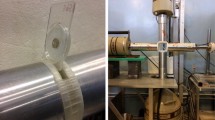Abstract
A novel approach is implemented to alleviate some persistent problems in neutron capture prompt gamma activation analysis (PGAA). Detection sensitivities of PGAA are often restricted by the following factors: poor signal to noise ratios, interferences from background signals, and, in some cases, overlapping energy lines from different origins, namely ultra short-lived decay lines interfering with prompt decay. Timing the gamma-ray acquisition with the actual capture events using a pulsed beam of cold neutrons allows discrimination between prompt and delayed emissions from a sample source as well as against background events. Coincidence gating selects the prompt gamma-ray emissions. Contributions of background capture gamma-rays are suppressed because of different flight times of neutrons to the sources of background radiation, providing a reduction in direct gamma-ray interferences. Anti-coincidence gating allows measurement of only decay radiation that originates from short-lived activated states of the nuclides after capture. Spectra of decaying nuclides are free of interfering prompt activities, as well as have lower continuum background from Compton scattering of high-energy prompt gamma-rays in the detector. The measurements provide the opportunity to use ultra-short half-life nuclides for analytical purposes, no sample transfer times are lost, and repetitive activation and counting cycles are achieved with the use of pulsed neutron beams.
Similar content being viewed by others
References
M. S. Germani, I. Gokmen, A. C. Sigleo, G. S. Kowalczyk, I. Olmez, A. M. Small, D. L. Anderson, M. P. Failey, M. C. Gulovali, C. E. Choquette, E. A. Lepel, G. E. Gordon, W. H. Zoller, Anal. Chem., 52 (1980) 240.
R. L. Paul, R. M. Lindstrom, J. Radioanal. Nucl. Chem., 243 (2000) 181.
D. L. Anderson, J. Radioanal. Nucl. Chem., 244 (2000) 225.
R. M. Lindstrom, R. Zeisler, D. H. Vincent, R. R. Greenberg, C. A. Stone, E. A. Mackey, D. L. Anderson, D. D. Clark, J. Radioanal. Nucl. Chem., 167 (1993) 121.
E. A. Mackey, G. E. Gordon, R. M. Lindstrom, D. L. Anderson, Anal. Chem., 63 (1991) 288.
E. A. Mackey, D. L. Anderson, R. M. Lindstrom, G. P. Lamaze, H. H. Chen-Mayer, P. J. Lipowski, Proc. MARC-V (2000).
G. P. Lamaze, H. H. Chen-Mayer, J. K. Langland, R. G. Downing, Surf. Interf. Anal., 25 (1997) 217.
D. F. R. Mildner, H. H. Chen-Mayer, G. P. Lamaze, V. A. Sharov, Nucl. Instr. Meth. Phys. Res., A413 (1998) 341.
R. G. Downing, P. L. Strong, J. Trace Elem. Experim. Med., 12 (1999) 205.
Author information
Authors and Affiliations
Rights and permissions
About this article
Cite this article
Zeisler, R., Lamaze, G.P. & Chen-Mayer, H.H. Coincidence and anti-coincidence measurements in prompt gamma neutron activation analysis with pulsed cold neutron beams. Journal of Radioanalytical and Nuclear Chemistry 248, 35–38 (2001). https://doi.org/10.1023/A:1010609604827
Issue Date:
DOI: https://doi.org/10.1023/A:1010609604827




